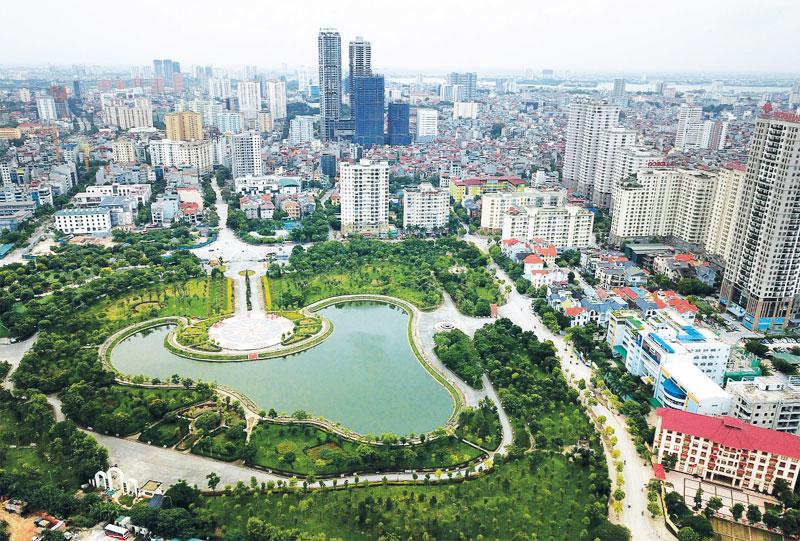Politburo sets development objectives for Hanoi until 2030
By 2045, Hanoi would become a global city with high living standards and a GRDP per capita of over $36,000.
The Politburo, the country’s supreme decision-making body, has issued a new resolution on the vision and development objectives for Hanoi by 2030, with a vision until 2045.
| A corner of Hanoi. Photo: The Hanoi Times |
Under this resolution, Hanoi would become a cultured, civilized and modern city, while fulfilling its role as the core and growth engine for the Red River delta, the northern region, and the country.
The city would have high competitiveness in Southeast Asia and the world, with a development level comparable to the capitals of developed countries in the region.
For the 2021-2025 period, the GRDP growth of Hanoi should be higher than the national average, with the economic expansion rate in 2026-2030 at 8-8.5% per year and GRDP per capita of US$12,000-13,000.
In the resolution, the city is expected to have four to seven rural districts turning into urban ones in 2025-2030.
By 2045, Hanoi would become a global city with high living standards and a GRDP per capita of over $36,000.
The resolution, however, stressed the necessity for Hanoi to address several shortcomings to realize these ambitious goals, including the lack of sustainability in economic development and insufficient utilization of resources to tap into its potential.
To date, Hanoi has not fulfilled its role as the growth engine for the Red River delta and the country, with its competitiveness lagging behind those in Southeast Asia and the world.
The resolution pointed out Hanoi’s weak socio-economic infrastructure which has not met the demands for growth, the uneven urban development, and slow progress of major projects, resulting in wasted resources and growth missed opportunities.
Accordingly, Hanoi should step up economic restructuring in line with a revision of the growth model, in which science, hi-tech, and innovation are the foundation.
Priorities, therefore, should be given to economic sectors of high added value, such as finance, banking, insurance, logistics, cultural industry, and tourism.
The resolution also sets the goal for the city’s overall planning until 2030, with a vision of 2050, expecting the Red river to become a green axis with people fully settled on the two banks of the Red and Duong rivers.
Hanoi is expected to develop smart cities alongside the Nhat Tan – Noi Bai axis, as well as continue the efforts in promoting underground urban/green/public spaces.
By 2027, the city should complete the ring road No.4, and ring road No.5 before 2030, along with the upgrade of Noi Bai International Airport and the construction of another one.












